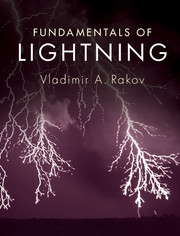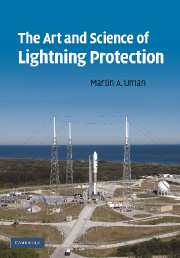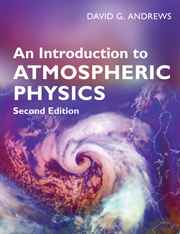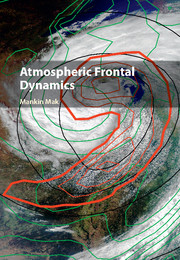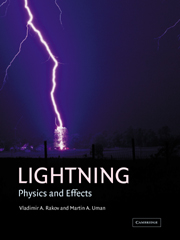Fundamentals of Lightning
This new book provides a focused set of topics suitable for advanced undergraduate or graduate courses on lightning. It presents the current state of the art in lightning science including areas such as lightning modeling, calculation of lightning electromagnetic fields, electromagnetic methods of lightning location, and lightning damaging effects and protective techniques. Pedagogical features designed to facilitate class learning include end-of-chapter summaries, further reading suggestions, questions and problems, and a glossary explaining key lightning and atmospheric electricity terms. A selection of appendices are provided at the end of the book, which include detailed derivations of exact equations for computing electric and magnetic fields produced by lightning. Designed for a single-semester course on lightning and its effects, and written in a style accessible to technical non-experts, this book will also be a useful, up-to-date reference for scientists, engineers and practitioners who have to deal with lightning in their work.
- Written by one of the world's leading authorities on the topic and co-author of the acclaimed Lightning: Physics and Effects
- Follows the content and structure of the lightning course that the author has taught over many years at the University of Florida
- Appendices include material from the author's public lectures and cover popular questions such as 'is it true that lightning never strikes the same place twice?' and 'is it possible to use lightning as an energy source?'
Reviews & endorsements
'This is a very clear, easy to read and insightful book on one of the most fascinating and yet complex natural phenomena. The content and structure of the book are well designed for use on an undergraduate or graduate course on lightning. It is enriched with interesting exercises and problems, and is nicely complemented by nine instructive appendices. The book is a must read for anyone interested in understanding lightning and its effects.' Farhad Rachidi, Electromagnetic Compatibility Laboratory (EMC Lab), École Polytechnique Fédérale de Lausanne (EPFL), Switzerland
'This is an outstanding textbook, written by a leading expert in our field. It provides an excellent quantitative and in-depth treatment of lightning from its atmospheric origins through to its practical implications. The content is nicely organized and layered, making it well-suited for a variety of levels of undergraduate and graduate courses in electrical engineering, applied physics and atmospheric sciences. It will also serve as a great long-term reference for researchers in our field.' Kenneth L. Cummins, University of Arizona
Product details
April 2016Hardback
9781107072237
248 pages
252 × 193 × 15 mm
0.73kg
125 b/w illus. 13 tables
Temporarily unavailable - available from TBC
Table of Contents
- Dedication
- Preface
- 1. Types of lightning discharges and lightning terminology
- 2. Incidence of lightning to areas and structures
- 3. Electrical structure of thunderclouds
- 4. Properties of the downward negative lightning discharge to ground
- 5. Calculation of lightning electromagnetic fields
- 6. Modeling of lightning processes
- 7. Measurement of lightning electric and magnetic fields
- 8. Electromagnetic methods of lightning location
- 9. Lightning damaging effects and protective techniques
- Appendix 1. How is lightning initiated in thunderclouds?
- Appendix 2. Reconstruction of sources from measured electrostatic field changes
- Appendix 3. Derivation of exact equations for computing lightning electric and magnetic fields
- Appendix 4. Compact intracloud discharges (CIDs)
- Appendix 5. Is it true that lightning never strikes the same place twice?
- Appendix 6. Is it possible to use lightning as an energy source?
- Appendix 7. Lightning safety
- Appendix 8. Lightning makes glass
- Appendix 9. Bibliography on triggered lightning experiments and natural lightning observations at Camp Blanding, Florida (1995–2014)
- Glossary
- References
- Index.

